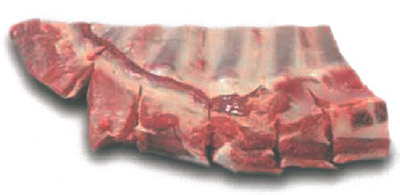Description: The Cabrito da Beira PGI kid meat comes from goats descended from the Serrana and Charnequeira breeds and the resulting cross breeds.
Production method: being cross bred these goats vary considerably in appearance. However the original breeds can be described as follows: the Serrana breed originates in the Serra da Estrela and is characterized by its low size, with members thin and resistant. The Charnequeira Race is mostly created in the south of Beira Interior and has great corpulence animals, with strong and short limbs.
Distinctive features: The animals are raised in an operating system based on extensive grazing and the kids are almost exclusively fed on maternal milk. The goats are slaughtered between 40 and 45 days old, weighing less than 15 kg. The specificity of the way it is created and fed determines the production of carcasses with lower weights 7 kg (5 kg on average), with unique organoleptic qualities, recognized regionally and nationally in the broad range gastronomic menus where it is included.
Production area: Cabrito da Beira PGI is produced in the municipalities of Meda, Figueira de Castelo Rodrigo, Pinhel, Guarda, Fornos de Algodres, Trancoso, Celorico da Beira, Seia, Gouveia, Manteigas, Covilhã, Almeida, Sabugal, Belmonte, Fundão, Penamacor, Idanha-a-Nova, Castelo Branco, Vila Velha de Ródão, Proenca-a-Nova, Oleiros, Sertã, Vila de Rei e Mação.
History: The origins of Cabrito da Beira PGI are linked to the Serrana and Charnequeira breed of goat, which, in their turn have obscure origins; they are possibly descended from the wild goats of the Quaternary period: Capra prisca, Capra aegagrus and Capra falconeri. Eventually, due to waves of migration, these animals became established on the Iberian Peninsula and produced the Capra pyrenaica goat.
Product specification (pdf)
Publication in EU official journal
Regulamento (CE) n.º 1107/96 da Comissão de 12.06.1996
Publication in the Portuguese official journal
Despacho n.º 56/1994 de 15.02.1994



